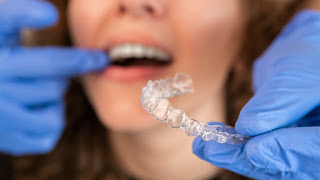Types of Partial Dentures, Costs & Pros and Cons of Each
When you have lost your
teeth, there are some tooth replacement options that can offer a cosmetic look
and an improved smile. Partial dentures are one of those great choices that are
designed to replace partially missing teeth. Therefore, if you have lost several
teeth or still have some healthy teeth remaining in your mouth, partial
dentures can provide you with the tooth replacement that you want.
Partial dentures come in different forms. Although the
dentist will recommend the best option after careful evaluation, patients have
the final choice as the wearer. Some of the common types of partials include:
Removable
partial dentures (RPD) have been in use in dentistry for
years to fill the gaps of missing teeth.
A removable partial denture uses metallic clasps or retainers
around the remaining natural teeth next to the missing area for the retention
of the dentures. These natural teeth are called abutments and dentists prepare
the adjacent abutment in advance to retain your partial denture.
Removable
partials have a gum-colored acrylic resin base that seats on your gum
bone spur pictures. On top of this acrylic base, artificial teeth are
attached depending on the number of teeth that are missing. As the name
suggests, removable partial dentures can be removed by yourself. The most
common designs are:
Cast metal partial denture
Cast
metal partial denture is the most common removable partial denture. It consists
of a major connector and minor connectors and also a soft gum-colored acrylic
resin base.
The major connector is the metal framework that acts as a
foundation for your partial denture. It is made of chromium cobalt or other
alloys like titanium. The minor connectors are other metal parts that twist
around your adjacent teeth. The minor connector consists of retainers, clasps,
rests, and metal bars that are used for maximum stability and retention. After
preparing the framework, now comes the acrylic resin base. It wraps around some
part of the framework to avoid soft tissue irritation and attach artificial
teeth on top.
Advantages:
- Maximum stability and retention
- Tough and rigid against breakage
- Used widely to replace as many teeth that a partial denture
can hold
Disadvantages:
- More metal visibility and may not be as esthetic
- Not favored by those who are allergic to metal or feel
uncomfortable with metal contact in their mouth


Comments
Post a Comment